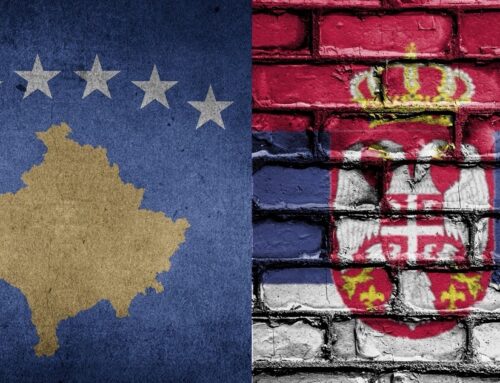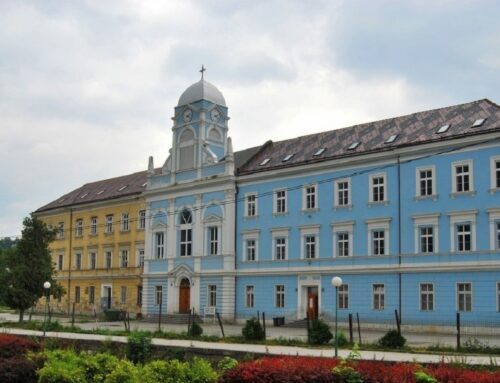Up until the end of the Soviet Union Russia had significant control over its Eastern Bloc and more specifically over many countries in Eastern Europe, however, with the failure of the Soviet Union’s political and economic reforms, Perestroika and Glasnost, many Eastern European countries paved their way towards independence. One would believe the fall of the Soviet Union would symbolize the end of Russian influence in Eastern Europe, but the actions taken by Russia in recent times and post-soviet times indicate otherwise and show that although the Soviet Union has collapsed, the interests of Russia remain in many parts of Central-Eastern and Southeastern Europe.
In the past Russia used the Soviet Union as a mechanism for the expansion of their imperialism and sphere of influence, however, following the independence and national movements of many of its former communist bloc countries, the birth of NATO, and the change in the structure of the world order, Russian expansion efforts could no longer be achieved through direct invasion. This leaves Russia and many other big powers who seek global dominance to opt for hybrid warfare as a means of extending their power rather than classical and territorial combat or invasion. To Russia Eastern Europe represents an exemplary region for their expansion efforts and in order to understand Russia’s actions in Eastern Europe we have to first analyze what makes Eastern Europe such an ideal candidate for the expansion of Russian influence through hybrid warfare.
According to Alexander Lanoszka, an assistant professor of International Relations at the University of Waterloo, and his article “Russian hybrid warfare and extended deterrence in eastern Europe” there are a series of significant reasons why Eastern Europe makes an ideal candidate for hybrid warfare and the expansion of Russian power. Lanoszka argues that hybrid warfare represents a strategy of warfare that uses a wide range of insurgent tactics and conventional deterrence as a means of conducting warfare.[1] In the current era with improved technology, change in global power, human rights laws, and international law, hybrid warfare is able to create a loophole that can allow for dominant powers to conduct warfare but avoid the consequences of international law by making use of plausible deniability.
Lanoszka argues what makes Eastern Europe an ideal candidate for Russian hybrid warfare is that it represents a relatively weak neighbor to Russia and one where civil society may be weak too.[2] In addition to that some Eastern European countries may also have ethnic or linguistic ties to Russia making it historically, culturally and ethnically linked to Russia. Russia, unlike other world powers, has an advantage in regional knowledge and understands the regional complexities of Eastern Europe better than other powers could and therefore being able to exploit it better.[3]
Real life examples of this can be seen today, such as Russia’s actions and involvement in Ukraine. Russia and Ukraine are tied to one another through historical and ethnic ties and Russia has used tactics of hybrid warfare, especially propaganda tactics, to appeal to the “linguistic and ethnic identities of populations in eastern Ukraine in order to present itself as a legitimate guarantor of their security”.[4] The aim of this is to agitate Ukraine with the idea of Russian unification, provoke a violent response, and then use intervention to solve the issue under the label of security and protection. This attempt can be seen in Ukraine following the 2014 annexation of Crimea and the “Russian Spring” campaign that followed it throughout east and south Ukraine.[5] Russia has made use of the situation by increasing its military presence in its border with Ukraine and backing up pro-Russian separatist movements, even going as far as to issue Russian passports to some of its members.[6] Russia’s tactic of sending masked forces in the form of “Little Green Men” to Ukraine in order to back, coordinate, and train the pro-Russian armed groups in the Dobass also shows the hybrid tactic Russia uses against Ukraine.[7] Backing up Russian minorities, especially if the conflict gets more violent, will act as a green flag for Russia as they can invite their intervention under the name of protecting or defending minorities and minority rights in Ukraine. Ukraine represents the most significant Eastern European country in Russia’s hybrid warfare goals.
Out of the Eastern European countries the Baltic countries, such as Latvia, Lithuania, and Estonia, also seem most volatile to Russian influence because of their significant population of Russian speaking minorities, like that in Ukraine, that may be susceptible to exploitation. These countries are culturally, ethnically, and linguistically tied to Russia through this population. The events of Ukraine, however, have signaled caution to some of these countries, specifically Lithuanian who is making successful aims at integrating its Russian speaking populace through providing citizenship early on and attempting to form a more robust national Lithuanian identity.[8] An example indicating such success being the higher likelihood of ethnically Russian children enrolling in Lithuanian-language schools over Russian-language schools.[9]
Estonia and Latvia on the other hand are facing more obstacles towards integrating its Russian population due to the higher marginalization Russian minorities have faced in the country and the friction that exists between them and the other local ethnic communities regarding politics and history.[10] If these other countries don’t find constructive ways to deal with their ethnic conflicts regarding their Russian minorities they will increase their susceptibility to Russian influence and hybrid warfare tactics and boding a similar fate to Ukraine.
It can be argued that Eastern Europe makes an ideal candidate for Russia’s power ambitions through hybrid warfare because of some linguistic, cultural, and ethnic ties that the countries may have to Russia as well as the presence of Russian minorities. The Russian diaspora gives Russia a strategic benefit in aiming for regional and global power as it can make use of it not only for propaganda and influence but also covering up any intervention under the pretense of defense. Besides ethnic ties other factors to consider would also be that in many eastern European countries communist and soviet nostalgia may still exist, thus increasing pro-Russian sentiment that can be targeted by Russia. Especially in the digital era we live in, hybrid warfare is far easier to conduct using cyber warfare and social media in spreading ideology, propaganda, false information and escalating conflicts.
Bibliography
Lanoszka, Alexander. “Russian Hybrid Warfare and Extended Deterrence in Eastern Europe.” International Affairs 92, no. 1 (2016): 175–95. https://doi.org/10.1111/1468-2346.12509.
Matviyishyn, Iryna. “How Russia Weaponizes the Language Issue in Ukraine.” Atlantic Council, June 25, 2020. https://www.atlanticcouncil.org/blogs/ukrainealert/putin-is-the-only-winner-of-ukraines-language-wars.
Conant, Eve. “See Why the Separatist Conflict in Eastern Ukraine Is Heating Up.” Culture. National Geographic, May 4, 2021. https://www.nationalgeographic.com/culture/article/see-why-conflict-eastern-ukraine-heating-up.
Lord, Ryan. “Russian Minority Populations in the Baltics.” ArcGIS StoryMaps. Esri, May 25, 2021. https://storymaps.arcgis.com/stories/6cb4f0a7dcd64278b52840a7dc364127.
[1] Alexander, Lanoszka. “Russian Hybrid Warfare and Extended Deterrence in Eastern Europe.” (International Affairs 92, no. 1, 2016)
[2] Lanoszka. “Russian Hybrid Warfare and Extended Deterrence in Eastern Europe.”
[3] Ibid
[4] Ibid, 184
[5] Iryna, Matviyishyn. “How Russia Weaponizes the Language Issue in Ukraine.” (Atlantic Council, June 25, 2020).
[6] Eve, Conant. “See Why the Separatist Conflict in Eastern Ukraine Is Heating Up.” (Culture. National Geographic, May 4, 2021.)
[7] Ryan, Lord. “Russian Minority Populations in the Baltics.” (ArcGIS StoryMaps. Esri, May 25, 2021).
[8] Lord. “Russian Minority Populations in the Baltics.”
[9] Ibid.
[10] Ibid.




